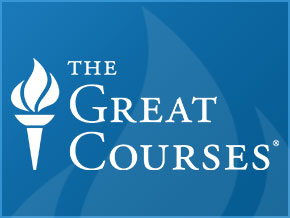[Book Excerpt] Essential Electives for Homeschooling High School
~ A word from our founder, The HomeScholar Emeritus, Lee Binz ~
This is a chapter from my book, Essential Electives for Homeschooling High School: How to Craft Courses That Exceed College Expectations. You can purchase a copy in print or Kindle version on Amazon.
Chapter 1
The Basics of High School Electives
Electives are subjects your children do on their own, not something you assign. If your child is taking care of horses, you can call the class "Animal Husbandry." Designing draperies can be part of an interior design class. Let your teenagers decide on electives as much as possible.
There's no limit on the topics your children can study as homeschool classes. You can create fancy or plain class titles — whatever you prefer. And you can include delight directed learning (see Chapter 3 and 4) on your child's high school transcript as electives.
I'm sure that somewhere across the United States you will find brick-and-mortar public or private schools that offer the same elective classes you teach at home. Many high schools offer crazy-sounding electives that happen to be what the teachers are interested in. But in your homeschool, choices are not limited by what the teachers are interested in, only by what the child wants to learn independently.
What are high school electives?
Electives are like dessert. They are the non-core classes or credits that don't fit under the core categories. Every high school offers elective classes.
When I was in high school, one of my electives was a class called "Polynesian History." My teacher offered it so he could go to Hawaii every year and write it off as a business expense. My brother-in-law was a public school high school teacher and taught one elective called "Sports Communication" and another elective called "The History of Baseball." He taught these two classes because he loved baseball and it allowed him to listen to the games during class time. If you go rockhounding regularly, then you can teach an elective in geology.
In addition to electives that are required by homeschool law, you can choose electives that are important to you or fun for your student. Electives you want to cover aren't the same ones all homeschool families want to include. They don't even need to be the same for each of your children.
Sometimes the most valuable electives are life skill electives such as driver's education or keyboarding, logic, and computer skills — the kinds of skills adults use every day. Either adults have these skills or wish they did. You can make sure your student learns the skills you did not in high school.
And you can give them personal time to pursue their passions. A little-known secret is that passion is an elective. When I was homeschooling, one of my boys loved chess and studied chess hours upon hours each year. One year we called those hours "Critical Thinking." The next year he began teaching chess classes and we called it "Public Speaking." The following year he got multiple chess jobs and worked for a chess company; we called those experiences "Occupational Education."
I know students who specialized in ornithology (the study of birds), mycology (the study of fungus), economics, and musicology. Specialization is one of the benefits of homeschool freedom. I encourage you to seize this opportunity so your children enjoy homeschooling.
How many electives are required?
On your child's transcript, add as many electives as are earned. High school graduation requirements generally include 24 credits, including English, math, social studies, and science plus as many electives as it takes to earn 24 or more credits. When your child plays their piano or guitar, plays basketball each day, or plays on the church worship team, then it's okay to include these activities as electives each year they participate in them.
What high school electives can you include?
Homeschoolers can tackle electives differently. You might want to include a crochet class, as I know so many homeschool girls that take crochet or knitting with them wherever they go. If your child does, that's great, include it on their transcript. School districts across the country include these kinds of classes and you can, too.
Wallingford Public School in Connecticut offers a class that includes crochet. They call it "Contemporary Crafts" and kids work on any yarn projects they want.
Northland Pines School District in Wisconsin offers a similar class called "Textiles, Arts and Crafts." Another school, Westwood School District in Michigan, includes a crochet class called "Creative Stitchery." Homeschoolers are simply doing what public schools already do. You can create your own classes and class titles.
Essential Electives for Homeschooling High School is one of my Coffee Break Books. What are Coffee Break Books? These are books designed for YOU - a busy homeschool parent feeling frustrated by something, and needing information NOW - all put together in an easy-to-read, short, simple format. Coffee Break Books are perfect for overwhelmed, sleep-deprived moms with a baby on their hip. Simple, large font makes them easy to read even when distracted or pulled in a million directions. They are designed to help parents tackle just ONE issue of homeschooling during just ONE coffee break! Each book combines a practical and friendly approach with detailed, easy-to-digest information. Never overwhelming, always accessible and manageable, each book in the series will give you the tools you need to tackle the tasks of homeschooling high school, one warm sip at a time.
Learn more about Essential Electives in my review below!
This is a chapter from my book, Essential Electives for Homeschooling High School: How to Craft Courses That Exceed College Expectations. You can purchase a copy in print or Kindle version on Amazon.
When you subscribe to the blog, we will send you an e-mail when there are new updates on the site so you wouldn't miss them.

 Login
Login









.jpg)

Comments